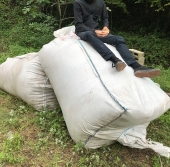




Have a blessed day!
- gunslingin goat farm and rabbitry




Have a blessed day!
- gunslingin goat farm and rabbitry








Have a blessed day!
- gunslingin goat farm and rabbitry








Sebastian Köln wrote:
I can think of:
- Wattle and Daub (requires a lot of cob, and a bunch of sticks)
- battens covered with cob (requires a lot of wood, less cob)
- compressed earth (probably only on the inner wall)












Have a blessed day!
- gunslingin goat farm and rabbitry




The holy trinity of wholesomeness: Fred Rogers - be kind to others; Steve Irwin - be kind to animals; Bob Ross - be kind to yourself




Have a blessed day!
- gunslingin goat farm and rabbitry




Jackie
~ Be the change!





| I agree. Here's the link: http://stoves2.com |




